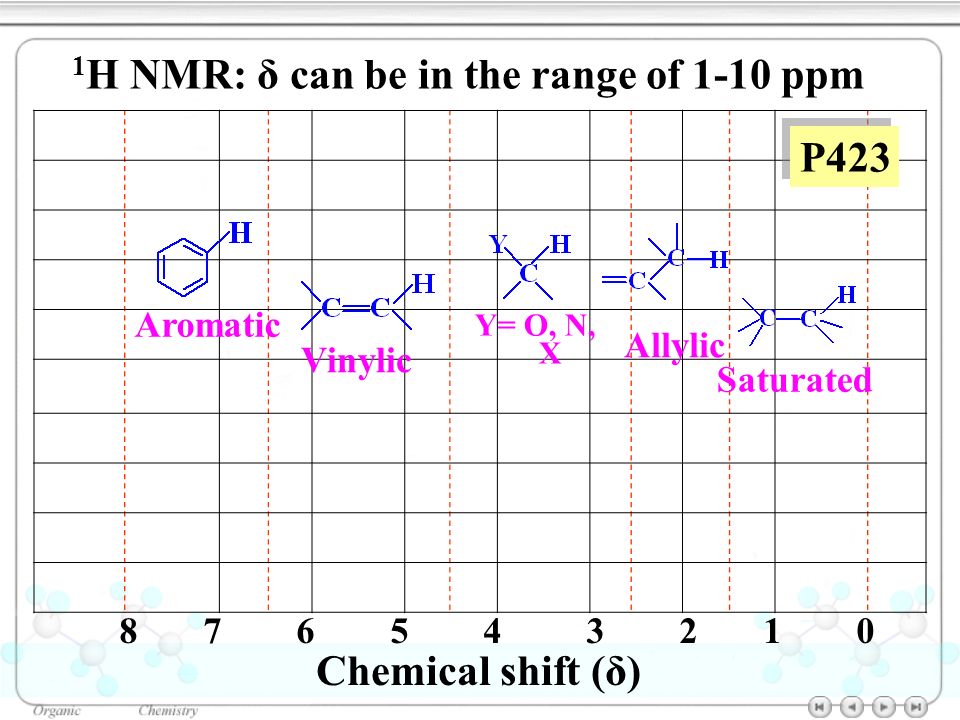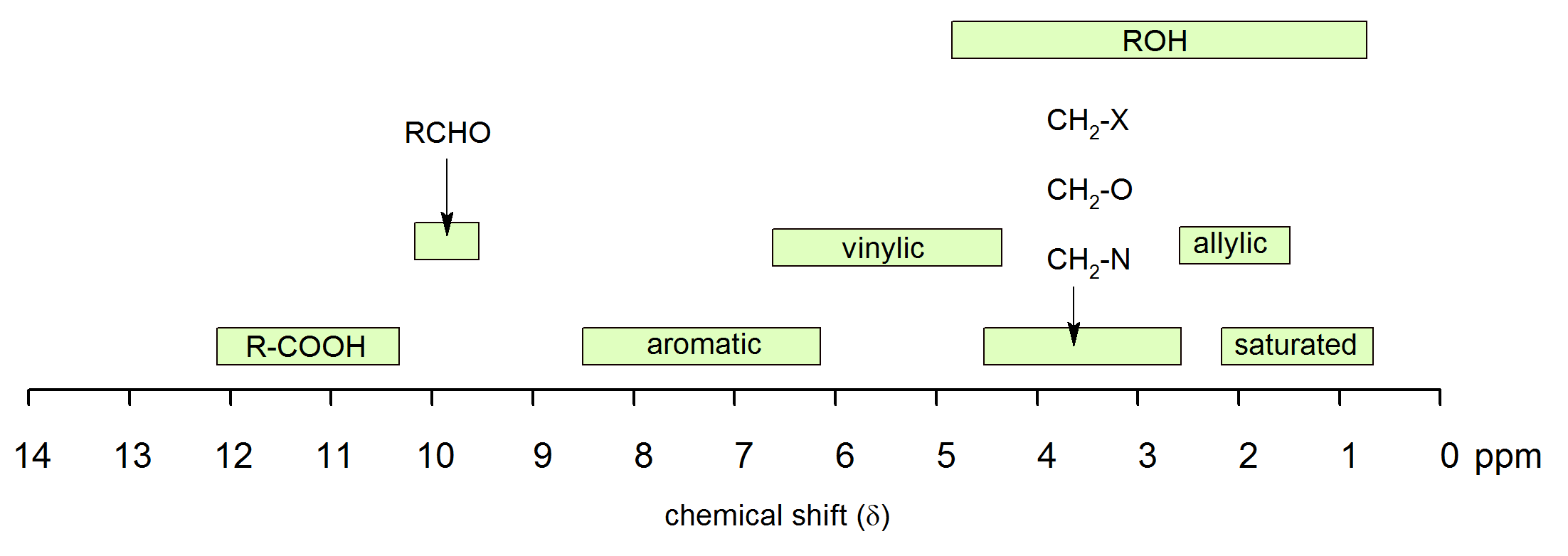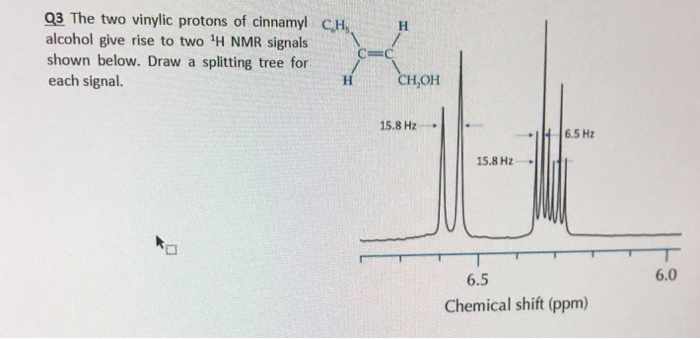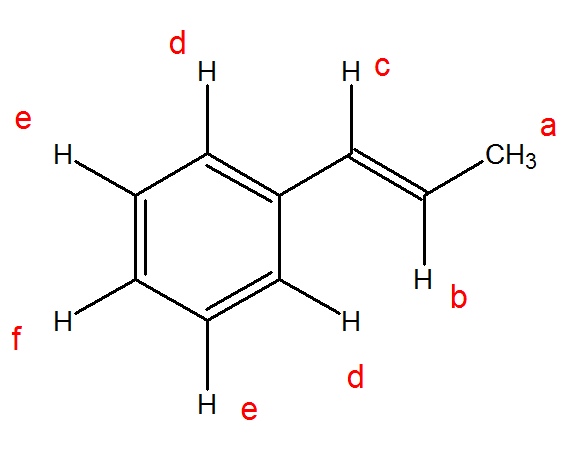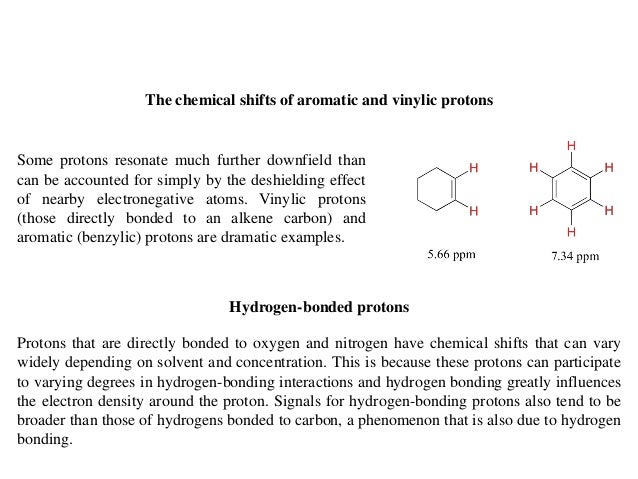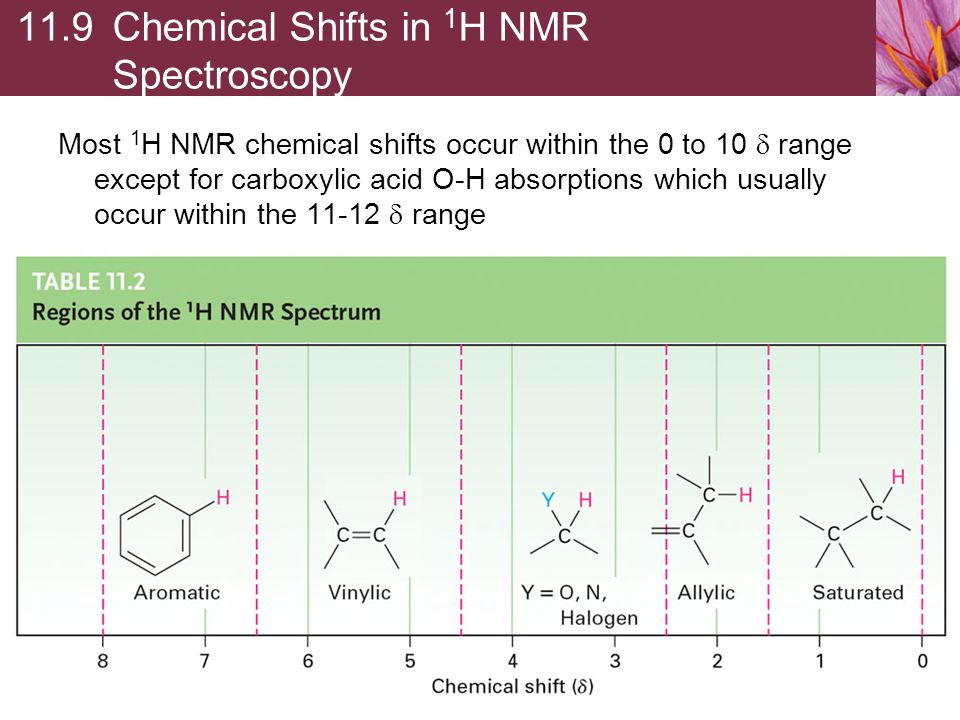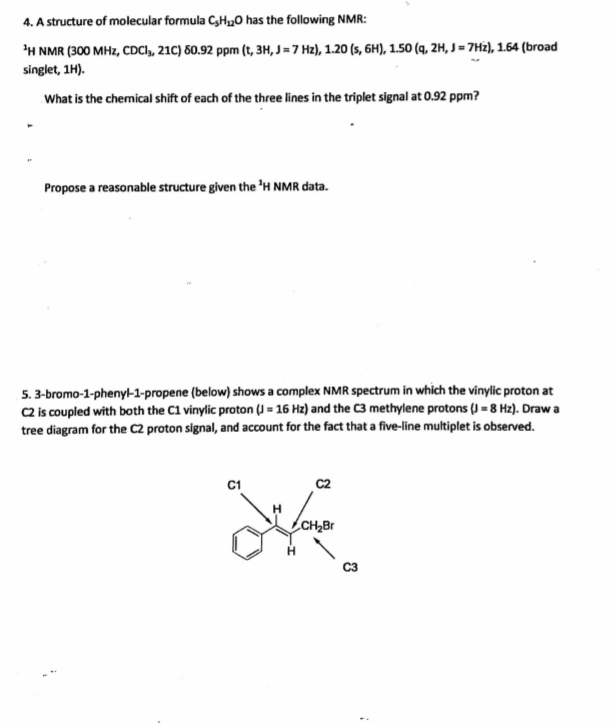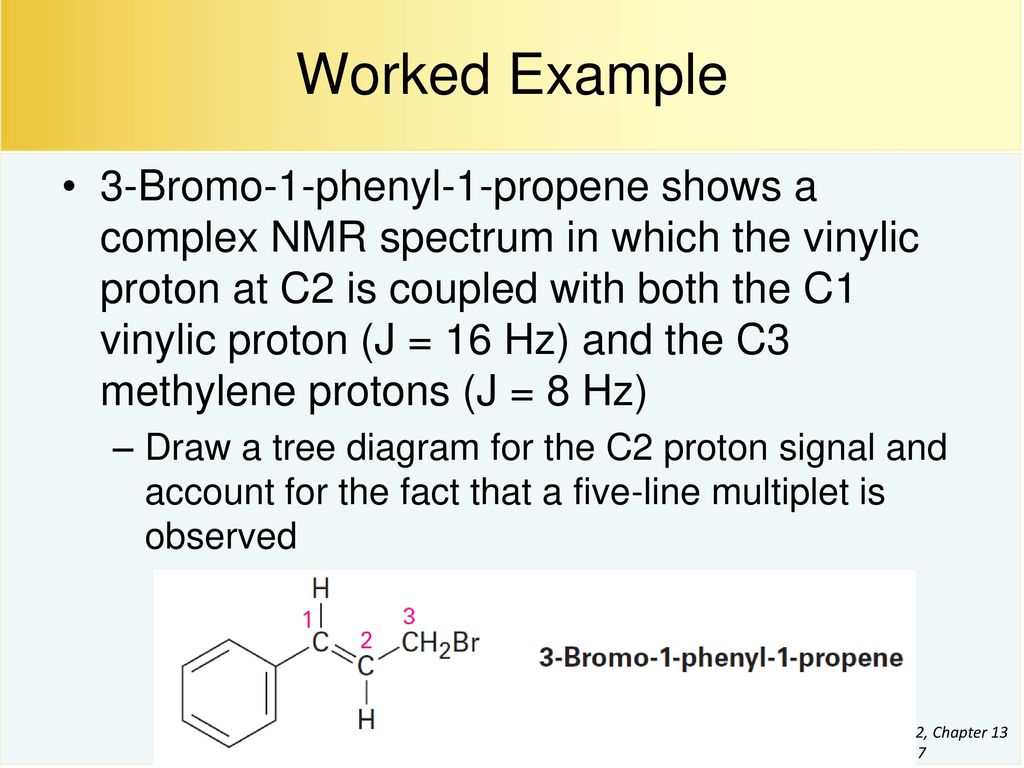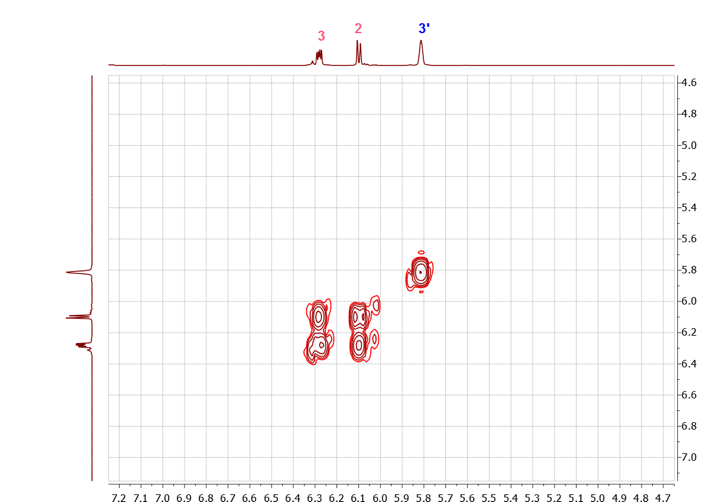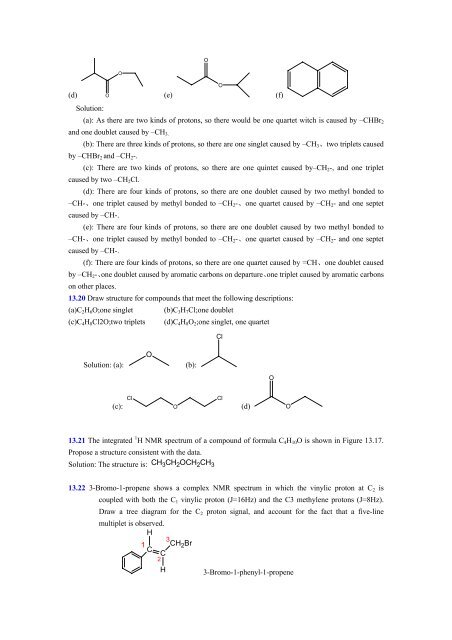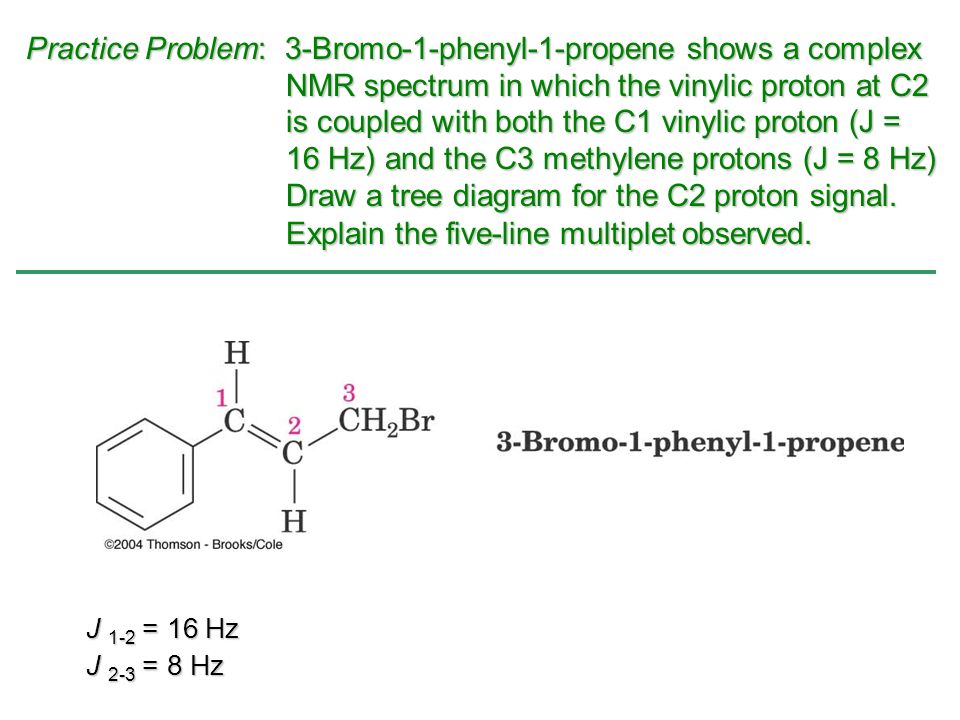Table of characteristic proton nmr shifts type of proton type of compound chemical shift range ppm rch 3 1 aliphatic 0 9 r 2 ch 2 2 aliphatic 1 3 r 3 ch 3 aliphatic 1 5 c c h vinylic 4 6 5 9 c c h vinylic conjugated 5 5 7 5 c c h acetylenic 2 3 ar h aromatic 6 8 5 ar c h benzylic 2 2 3 c c ch 3 allylic 1 7 hc f.
Vinylic hydrogen chemical shift.
The most extreme value is for naked i e completely unshielded protons and those have a shift of about 40.
Hydrogens directly bonded to mercury have shifts around 17.
The chemical shift of hydrogens is caused by the electron distribution in the molecule the movement of the electrons produce small magnetic fields that affect the net field experienced by each hydrogen nucleus proton.
You can also get negative shifts down to about 10.
Yes but most shifts are less than those seen for carboxylic acids.
Those bonded to carbon atoms which are in turn bonded to a highly electronegative element.
Those bonded to carbon.
The following have one h 1 nmr peak.
Those bonded to.
The chemical shifts of aromatic and vinylic protons some protons resonate much further downfield than can be accounted for simply by the deshielding effect of nearby electronegative atoms.
Identify the different equivalent protons in the following molecule and predict their expected chemical shift.
